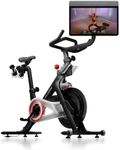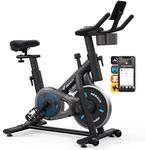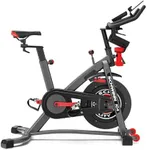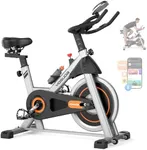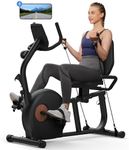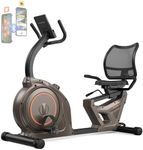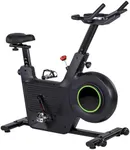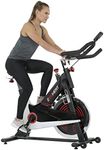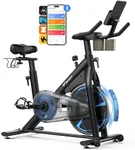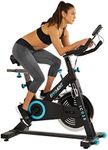Buying Guide for the Best home exercise bike
Choosing the right home exercise bike can significantly enhance your fitness routine and help you achieve your health goals. When selecting an exercise bike, it's important to consider various specifications that will impact your workout experience. Understanding these key specs will help you make an informed decision and find the best fit for your needs.Type of Exercise BikeThere are three main types of exercise bikes: upright, recumbent, and indoor cycling (spin) bikes. Upright bikes are similar to traditional bicycles and are great for general fitness. Recumbent bikes have a reclined seat and provide more back support, making them ideal for people with back issues or those who prefer a more relaxed workout. Indoor cycling bikes are designed for high-intensity workouts and mimic the feel of outdoor cycling. Choose the type that aligns with your fitness goals and comfort preferences.
Resistance LevelsResistance levels determine how challenging your workout will be. Exercise bikes typically offer magnetic, friction, or fan-based resistance. Magnetic resistance is quiet and smooth, making it suitable for home use. Friction resistance is more affordable but can be noisier and require more maintenance. Fan-based resistance increases with your pedaling speed, providing a dynamic workout. Consider your fitness level and the intensity of workouts you desire when choosing the resistance type and range.
AdjustabilityAdjustability refers to how much you can customize the bike to fit your body. Look for bikes with adjustable seat height, seat position (forward/backward), and handlebar height. Proper adjustability ensures a comfortable and ergonomic riding position, reducing the risk of injury and improving the effectiveness of your workout. If multiple people will be using the bike, ensure it can accommodate different body sizes and shapes.
Display and Console FeaturesThe display and console features provide important workout data such as time, distance, speed, calories burned, and heart rate. Some advanced models offer interactive displays with virtual rides, workout programs, and connectivity to fitness apps. Decide which features are essential for tracking your progress and keeping you motivated. Basic displays are sufficient for straightforward workouts, while advanced consoles can enhance your exercise experience with more engagement and variety.
Weight CapacityWeight capacity indicates the maximum user weight the bike can safely support. It's important to choose a bike that can accommodate your weight to ensure stability and durability. Most home exercise bikes have a weight capacity ranging from 250 to 350 pounds. Check the manufacturer's specifications and select a bike that meets or exceeds your weight requirements for safe and effective use.
Footprint and StorageThe footprint refers to the amount of space the bike occupies. Consider the dimensions of the bike and the available space in your home. Some bikes are foldable or have wheels for easy storage, making them ideal for smaller living spaces. Measure your designated workout area and choose a bike that fits comfortably without obstructing movement or other activities.
Comfort FeaturesComfort features include the quality of the seat, handlebars, and pedals. A well-padded, ergonomic seat and non-slip handlebars can make your workout more enjoyable. Some bikes offer additional features like built-in fans, water bottle holders, and media shelves. Prioritize comfort to ensure you can sustain longer workouts without discomfort or strain.

